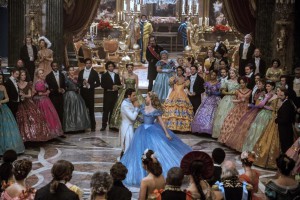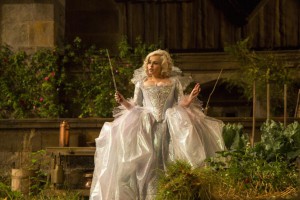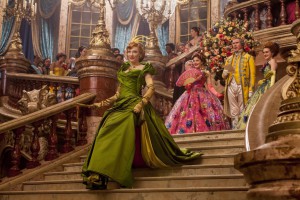Cinderella Review
 When you think of the classic fairytale of Cinderella, the first images that pop into your head are probably of Walt Disney’s animated classic from 1950. The rags-to-riches masterpiece is one of the most retold stories of all time and its origins can be traced through almost every culture around the world over thousands of years. It has inspired multiple written versions, stage adaptations and films, but the latest retelling comes from Disney, which feels all too fitting for a company that made its name adapting fairytales in a way that nobody else could.
When you think of the classic fairytale of Cinderella, the first images that pop into your head are probably of Walt Disney’s animated classic from 1950. The rags-to-riches masterpiece is one of the most retold stories of all time and its origins can be traced through almost every culture around the world over thousands of years. It has inspired multiple written versions, stage adaptations and films, but the latest retelling comes from Disney, which feels all too fitting for a company that made its name adapting fairytales in a way that nobody else could.
The 1950 animated version was based on Charles Perrault’s adaptation. This new live action retelling draws inspiration from both versions, combining elements that are uniquely Disney (mice, Lucifer, forgetful fairy godmother) with things they left out of Perrault’s tale (fairy godmother's transformation, Ella before Cinderella). Screenwriter Chris Weitz has done a fine job of crafting a more detailed story while still remaining true to the essence of the characters we love. It strays from getting too macabre (you won’t see a stepsister contemplate parting ways with a toe in this version), but does get a lot darker and sadder than Walt’s adaptation allowed. It’s mostly the story you already know with a few small surprises, but nothing that fundamentally changes the tale.
Like any new adaptation of a timeless classic, this one has its pros and cons. The film’s greatest strengths are the casting choices of director Kenneth Branagh and the performances each actor provides. Cinderella is played by Lily James, a relatively unknown actress who is exquisite in this role. She carries the film with ease and is so lovable its hard not to root for her. She leaves a lasting impression and I expect her to become a household name very quickly. Cate Blanchett’s Lady Tremaine is just as cruel and calculating as you expect her to be, but with a little more motivation than her animated counterpart. She is absolutely delicious in this role. Richard Madden plays the prince, who gets a much bigger part in this version. If his performance doesn’t win you over, his deep blue eyes surely will. And while the Fairy Godmother is just as forgetful as in Walt’s version, Helene Bonham Carter makes the role her own by adding quirks to this glamorous character.
Another creative choice missing from Walt’s classic but present in other retellings is a meeting between Cinderella and the prince in disguise before the ball. It allows the two to have a spiritual connection rather than just "love at first sight" and makes their love feel more real. The prince’s backstory somewhat mirrors Cinderella’s and the two are fundamentally the same type of person. This version also ads a hint at the stepmother’s past and the realization that she and Cinderella weren't all that different once upon a time.
However, there are a few things that I didn’t love in this version of Cinderella. Too much backstory can sometimes be a bad thing and this film is slow to start as a result. A subplot towards the end to slow the prince’s search for Cinderella also slows the pace of what could have been an exciting climax. But the biggest problem comes from the humor. It makes multiple attempts at cheap laughs aimed exclusively at children. These gags feels unnecessary in a story that already has universal appeal and as most previous versions have proven, can be told with universal humor as well. The film looks lush and beautiful and has some amazing performances, so these dumbed down jokes feel drastically out of place.
Overall Cinderella is an enjoyable movie going experience for anyone who loves classic fairy tales. While it may not be the most perfect version of Cinderella ever told (I rank the animated classic and the 1997 version of Rodgers & Hammerstein’s above this one), it does so many things right that it’s easy to look past the flaws.
I give Cinderella 3.75 out of 5 glass slippers.





